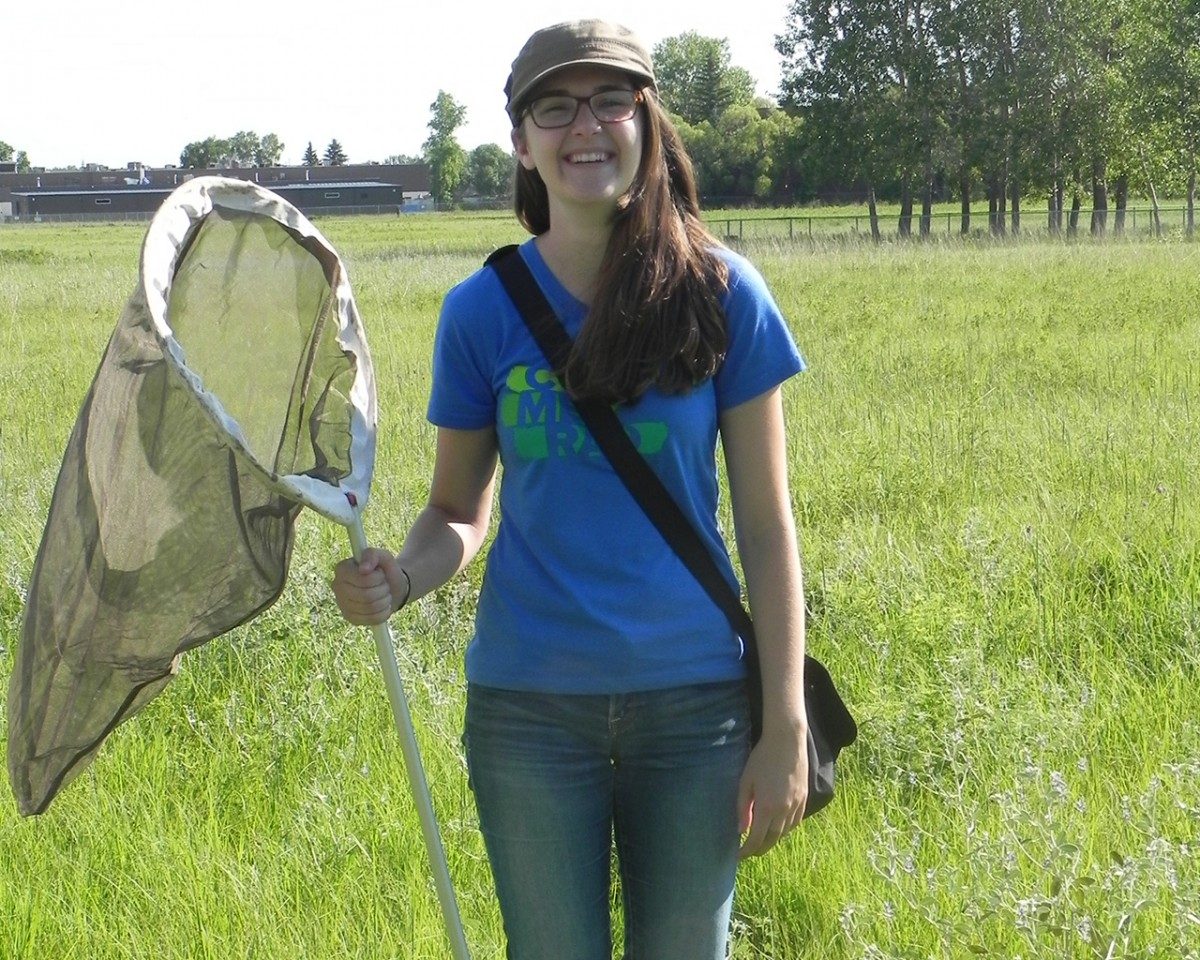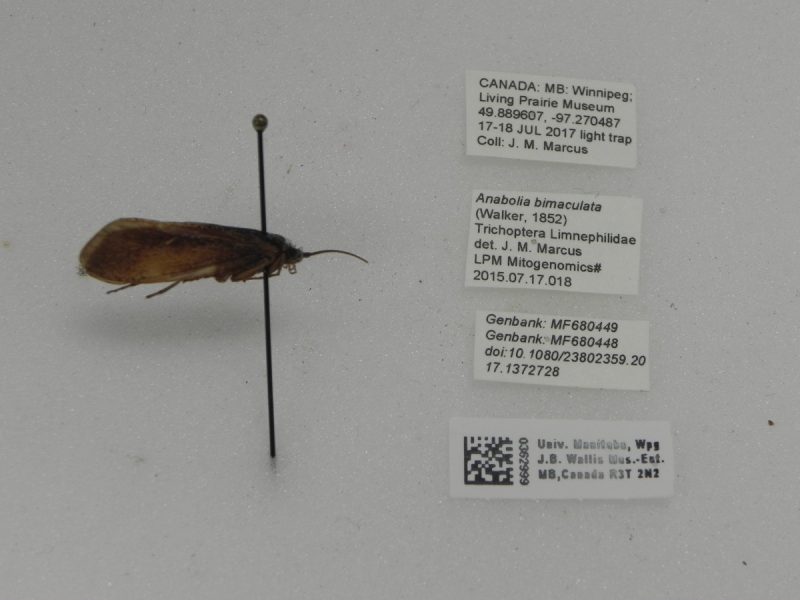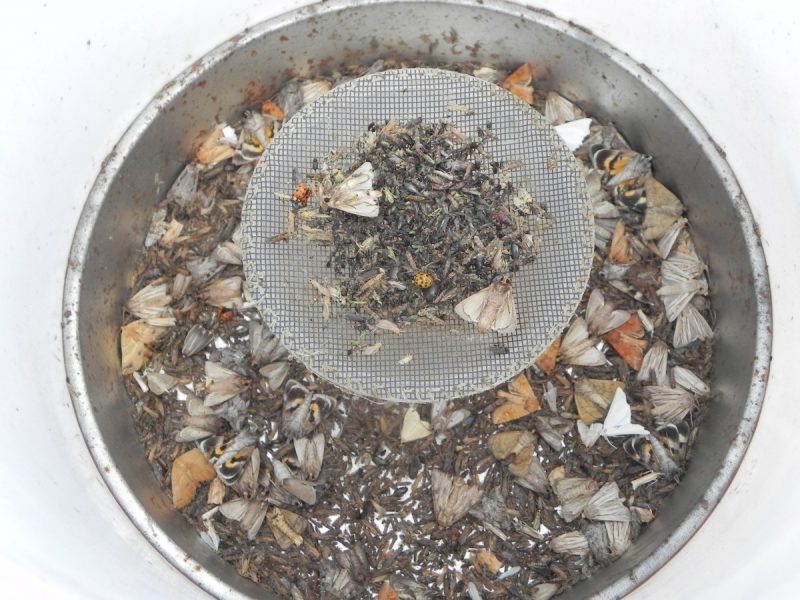
Melissa Peters, [BSc.(Hons.)/16] who worked on extracting the DNA from the specimens.
BIOL 4542 brings research to life
Dr. Jeff Marcus challenges undergraduate students to make new discoveries – think big and get published
Unless you are an avid fly fisher, you probably haven’t heard of the Rush Sedge Caddisfly. Much less studied than its butterfly and moth cousins, relatively little is known about this unassuming creature, outside the angling world. However, thanks to the initiative of Biological Sciences Professor Jeff Marcus and his most recent BIOL 4542 class, Phryganea cinerea is finally earning some long overdue attention in academia, due to a scientific paper co-authored by Marcus and his class of 40 undergraduates. Entitled “The complete mitochondrial genome of the giant casemaker caddisfly Phryganea cinerea (Insecta: Trichoptera: Phryganeidae), the article was published in March 2018 in Mitochondrial DNA Part B, a respected online science journal.
A fourth-year Biological Sciences course, “BIOL 4542 Genes and Development” is meant to help students make connections amongst what they’ve learned so far during their undergraduate career. However, after teaching the class for several years, Marcus felt something was missing from his delivery of the course material.
“Here I am trying to show the excitement that we’re supposed to have for science, but the students were not actually doing any science. They were learning what was in the lectures, perhaps from some supplementary readings from the primary literature and the textbook. What I was having trouble doing was trying to demonstrate to the students what really made all this exciting, which is that if you’re doing science correctly, when you’re finished with something, you actually know more than when you start. It’s not just that you personally know more, but we collectively as a community know more than when we started.”

Actual specimens. Photo credit Dr. Jeff Marcus.
Puzzled as to how to convey the true thrill of scientific discovery, Marcus found himself thinking back to his days at Western Kentucky University, when he taught a “Welcome to University” course to a group of undergraduates. Apart from the six readings the students were compelled to complete during the year, Marcus was free to do what he wanted with the course. Using an approach he’d first developed for a genetics course, Marcus took his class out into the field where each student collected an insect specimen and sequenced a small part of its DNA. It was through this kind of hands-on work that he was able to convey to his students his passion for science.
So it was that in 2015, armed with the memories of his experience at WKU, along with the course development funds from the Centre for the Advancement of Teaching and Learning, Marcus set about collecting data to give to his class for analysis. He hired an undergrad (Melissa Peters) to help with field data collection and the molecular biology bench work. They then worked with the Next Generation Sequencing Platform group on the Bannatyne campus to transform the samples into collections of DNA sequences, which is what the students finally worked on.
“What happens in the class now is we’re taking millions of sequences that come from a DNA sample of a bug that was collected at the Living Prairie Museum in Winnipeg. We assemble the entire mitochondrial DNA of the insect, and then the students find all of the genes, and find all the quirks about all of the genes in the mitochondrial genome. We compare the mitochondrial genome from this bug to all of its closest relatives and then the students and I publish a paper together.”
Marcus is responsible for choosing which bug the students study each term, since he wants to ensure that there is enough information available in the databases for comparison purposes so that the project is an appropriate level of difficulty. Marcus also wants to make sure that someone hasn’t already mapped the genome for his chosen species or published a paper on it already.
He is quick to point out that he’s only doing a variation of what others have done before him: taking the enthusiasm, energy and discovery from the field and transporting it into a classroom setting. He wants to ensure that his students don’t know the answer to whatever it is they’re doing from the outset. The biggest difference from his days in Kentucky lie in the constraints placed on field work: due to the colder Manitoban climate, his students aren’t able to go out to the field when classes are in session.
“The bugs are not active for the time that the students are in class. Because we’re not just sequencing a tiny little piece of DNA, instead of each student having their own bug, what we are doing is that we as a class are working on one bug species at a time. It’s a class unknown, rather than an individual unknown.”

Light trap. Photo credit Jeff Marcus.

An informal sampling of Marcus’ former students elicits rave reviews:
Emma Rempel – “I really liked Dr. Marcus’s enthusiasm in teaching the class, and the mitochondrial genomics assignment was great, as it was my first experience publishing an academic paper. I would like to see more professors try creative projects like this in the future, providing students with insights for a future in research.”
Skyler Eastman – “The content is very intriguing for people with an interest in biology, but I believe Marcus’ approach to learning is what makes this course a ‘must take’. I believe it is great that Dr. Marcus has included us as co-authors on the mitogenomics assignment publication. This publication will be something that BIOL 4542 students will have forever, and it is an excellent thing to add to the CV.”
Natasha Osawa – “I enjoyed his style of teaching because it was like he was always telling a story. One advantage I noticed with this approach was it made me think about things as a broader concept and take away the big picture, whereas in more traditional approaches I have found that I focus so much on the fine details that I lose track of the purpose or importance on a grand scale.”
Taylor Nimchonok – “Often students are faced with a choice in their science degree between research or another field and in order to get exposure to certain programs or techniques you need to be all in, usually in the form of an honours project. Dr. Marcus’ class was unique in that not only did it give us an opportunity to learn about things like GenBank and Blast, it let us be part of the publication process which is something few non-honours students get to experience. All in all, I thought the course was a fun way of putting four years’ worth of biology classes together in a way that made us think.”
Marcus is pleased that the response from his students has been so positive. He believes the reason that enrollment in BIOL 4542 has increased between this year and last year (when the 2017 edition of the class characterized the mitochondrial genome of another obscure insect: the lesser webworm moth) is that students have gotten wind of this new, hands-on approach to studying. He plans to eventually write a teaching methods paper that describes the overall exercise, in case other educators are interested in trying to reproduce his success.
“A whole bunch of the data that I originally intended for the students to analyze, we actually found some really interesting patterns in. My research lab has been publishing stuff that is from the same body of field work, but independent of what the Genes and Development students are doing, just because it’s interesting on a different level. So we’ve had a series of papers using the caddis flies as an example. At this point, because this is an understudied group, there’s now more of these mitochondrial genomes published from Winnipeg than anywhere else on Earth.”
Research at the University of Manitoba is partially supported by funding from the Government of Canada Research Support Fund.






